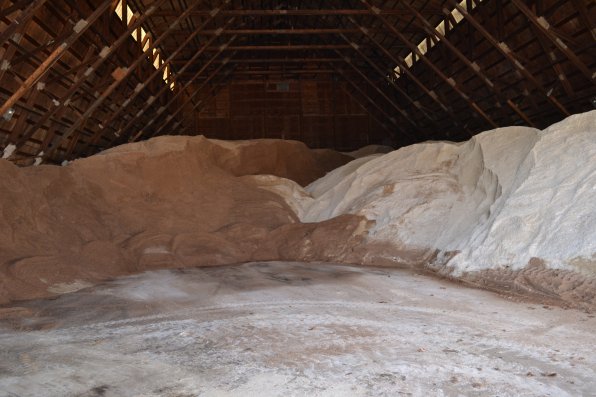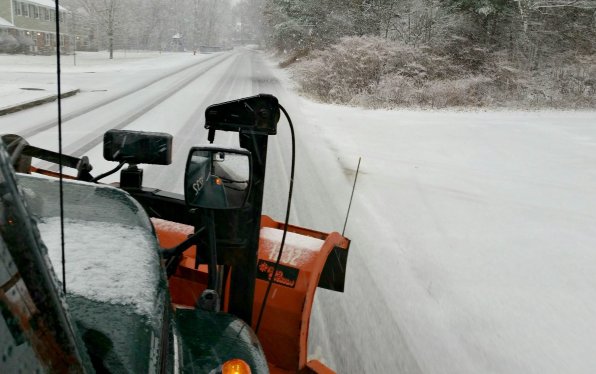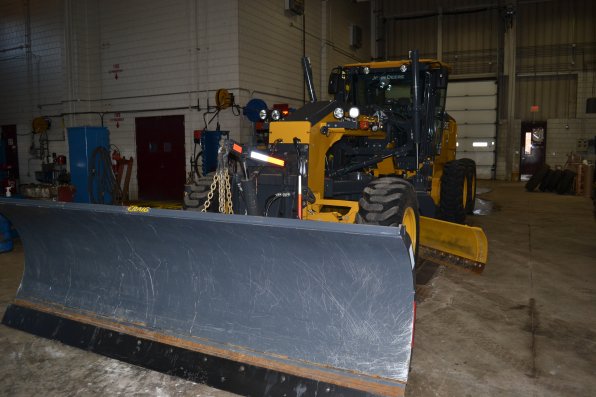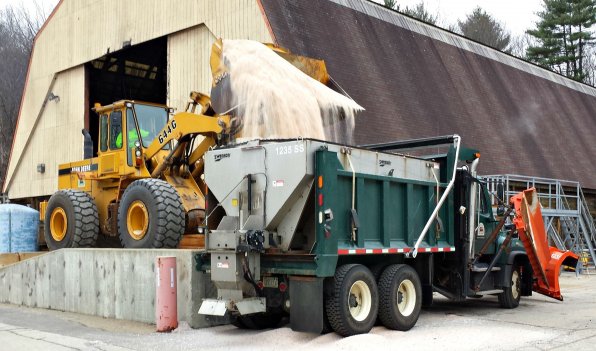It happens to all of us. You awake from a sound sleep one winter morning to find that it’s snowing. How did you miss the weather report or why didn’t anybody say something during the afternoon chat around the old office water cooler?
The fluffy white stuff means trudging out in the dark to clean off the car, shovel your way out of the driveway and leave extra time to get to wherever you might be heading.
This also coincides with the time when you swear that paying closer attention to the weather report has to be part of your daily routine. These surprise bursts of precipitation are really getting old.
And while the storm may have caught you off guard, the same certainly cannot be said for Concord’s General Services team. They knew when the storm was going to start, about how much snow was going to fall and what time they needed to be out in the plows to make sure the roads are safe for all of you.
“We follow all the weather reports,” said highway systems supervisor Kevin Demers. “And once the snow starts flying, we’re out there.”
It takes a lot of coordination to tackle a storm, especially like the one we got hit with the day before Thanksgiving that dropped close to a foot of snow in the city. If we’re not mistaken, wasn’t General Services supposed to be dealing with the fall leaf cleanup that week? Yes, but once again, the snow removal team was prepared.
The preparation actually begins in the summer, when all the equipment gets a once over, the salt barn is filled and by Halloween (and if you don’t remember, it has snowed then, too) and the plow trucks are ready to roll at a moments notice.
“One of the keys to effective snow removal is preparation,” said General Services Director Chip Chesley. “Being ready by Halloween in New Hampshire is not a dumb thing.”
Well, on Halloween, the actual plows need to be put on and the salt spreaders need to be installed, which they prefer to do after the leaf cleanup is done, but it doesn’t take long.
“To take the plows on and off, with a couple guys, it takes about 10 minutes,” said fleet manager Bob LeBreux.
And when Mother Nature doesn’t cooperate, like this year, it just leads to a longer fall cleanup. No big deal though, especially with the warmer temperatures and almost no snow to speak of since the Thanksgiving surprise. Our biggest conundrum is why can it snow for Halloween one year and then Thanksgiving a couple calendar changes later, but never on Christmas – the one day we actually want the white stuff to fall?
When a storm is approaching, there’s a lot to take into account. What kind of precipitation is it going to be? Do the roads need to be pretreated? Is it going to happen before or during the morning or afternoon commutes? Is school is session? How will it affect the Insiders?
Once all the questions have either been answered or made up, the plan of attack is put into place. With 220 miles of roads and another 90 or so in sidewalks, the snow removal team has lots to do – and not always the time to do it.
“It’s important that people give the equipment the space to do it’s job,” Chesley said. “And the tougher storms are the ones that are a longer duration.”
The city is broken down into four priority levels. The top priorities include the areas around the hospital, fire and police stations, as well as the downtown area. Various major travel routes in the city are among the first and second priority levels, while the third and fourth consist of less traveled roads and low volume residential streets.
“We need to maintain the high priority areas,” Demers said.
And here’s a fun fact: The downtown sidewalk area, from Storrs Street to Green Street, and Centre Street to Pleasant Street, are the only sidewalks plowed during a storm and only through 3 p.m., when the main crew is on.
“It’s a significant investment of time and effort to keep the streets and sidewalks plowed,” Chesley said.
The road coverage depends on when the storm starts and how long it lasts, but for the sake of this exercise lets say it begins at 8 a.m. and lasts until the next morning. The main shift is 7 a.m. to 3 p.m. and includes 23 pieces of snow removal equipment. The swing shift, which is made up of members from other city departments, goes from 3 to 11 p.m. and uses 16 pieces of equipment. And if the storm is still going, the main crew then returns at 11 p.m. and will work for 16 straight hours if need be.
“Freezing rain during the morning commute is probably the worst,” Chesley said.
Once the roads are plowed and salted, it’s time to tackle the sidewalks – that is if another storm doesn’t come along. The sidewalk plows and snowblowers are strategically placed around the city to maintain certain areas. Those things don’t move that fast, so if they had to drive them each time from General Services, they might get to the desired spot by next winter.
If you haven’t seen the video of the downtown night cleanup on the General Services website, it shows what goes down under the cover of night when the parking bans are in effect downtown. That’s where the heavy artillery is busted out, like the road graters with an 11 foot plow and 10 foot wing. Large snow blowers attached to big trucks take the piled up snow from the middle of the street and deposit it in city dump trucks, which then bring it to the top secret dumping spot (off Langdon Ave.)
“It’s kind of nasty at the end of the year,” Demers said. “It took a while for last year’s to melt.”
Snow is much easier to handle then freezing rain or sleet. But no matter what is going on, there’s a plan on how to treat the roads. The budget calls for about 6,200 tons of salt this year with between 3,000-4,000 tons on hand right now. Some is mixed with Ice B’ Gone, and there’s a breakdown for how much is needed per lane mile depending on temperature and precipitation conditions, ranging from 100 to 250 pounds per lane mile. It’s a science thing that is nearly impossible to understand.
“We certainly try to keep the barn full,” said business manager Jeff Hoadley.
And while there’s sand on hand, it’s not used all that often.
“The problem with sand is that when you put it down you eventually have to pick it up,” LeBreux said.
We’d also get a failing grade if we didn’t mention that General Services has a way for you to sign up for email notifications or use the request tracker feature to inform them of an issue. They’re also quite adept to posting stuff on social media.
“We’ve really stepped up our communication with residents,” said department communications guru Angelina Bossone.
So the next time you are fed up with the way things are going this winter, remember all that goes into dealing with a storm and you’ll probably be thankful for your tiny driveway and short walkway.
For more on what General Services does, visit concordnh.gov/generalservices.












